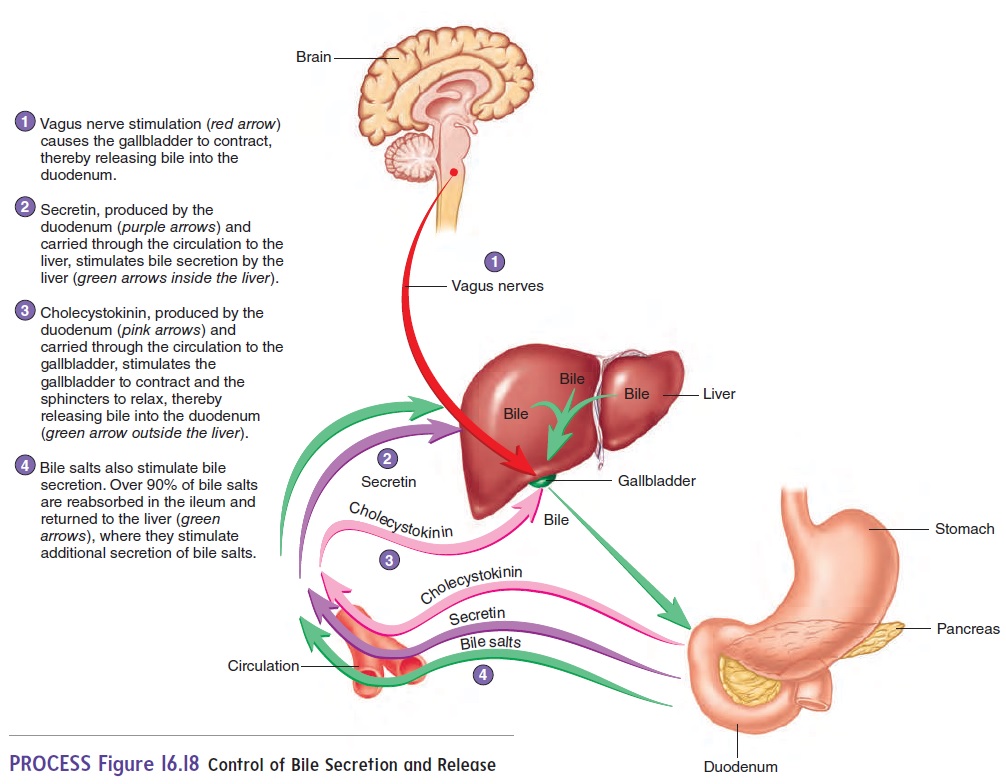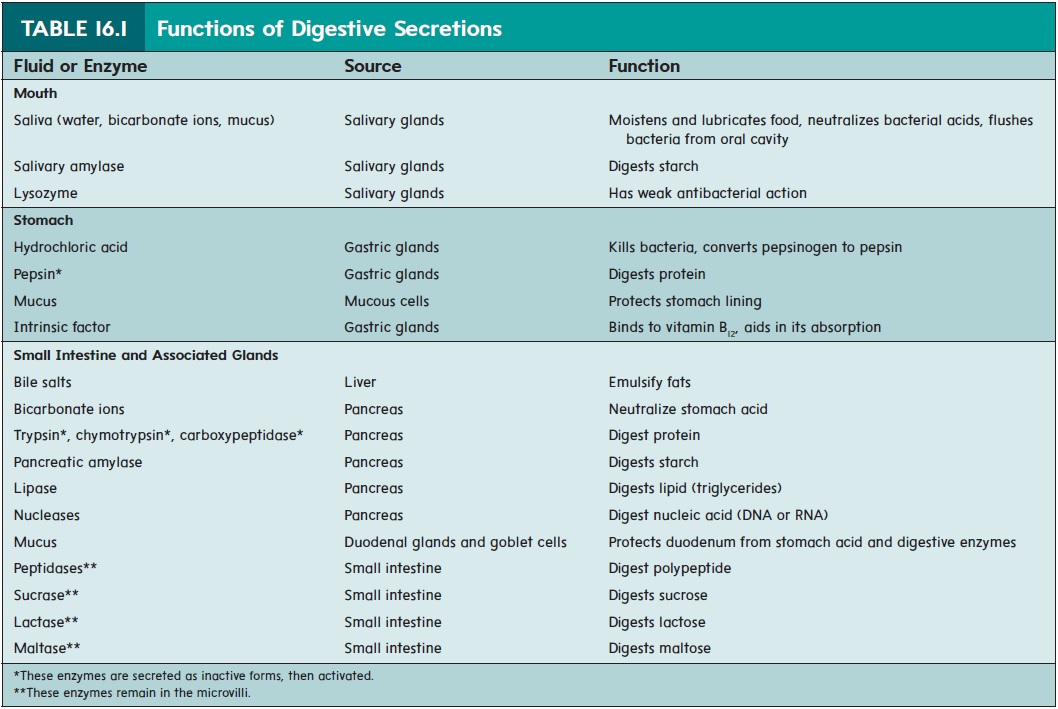Chapter: Essentials of Anatomy and Physiology: Digestive System
Functions of the Liver
Functions Of The Liver
The liver performs important digestive and excretory functions, stores and processes nutrients, detoxifies harmful chemicals, and synthesizes new molecules (table 16.3).

The liver produces and secretes about 600–1000 mL of bile each day. Bile (bı̄l) contains no digestive enzymes, but it plays an important role in digestion by diluting and neutralizing stomach acid and by dramatically increasing the efficiency of fat digestion and absorption. Digestive enzymes cannot act efficiently on large fat globules. Bile salts emulsify fats, breaking the fat globules into smaller droplets, much like the action of detergents in dishwater (see tables 16.1 and 16.3). The small droplets are more easily digested by digestive enzymes. Bile also contains excretory products, such as cholesterol, fats, and bile pigments, includingbilirubin(bil-i-roo′ bin), a bile pigment that results from the breakdown of hemoglobin . Gallstones may form if the amount of cholesterol secreted by the liver becomes excessive and is not able to be dissolved by the bile salts.
Neural and hormonal stimuli regulate the secretion and release of bile (figure 16.18). Bile secretion by the liver is stimulated by parasympathetic stimulation through the vagus nerve. Secretin, which is released from the duodenum, also stimulates bile secre-tion and release. Cholecystokinin stimulates the gallbladder to contract and release bile into the duodenum. In addition, most (90% of) bile salts are reabsorbed in the ileum. The blood carries the bile salts back to the liver, where they stimulate additional bile salt secretion and are once again secreted into the bile. The loss of bile salts in the feces is reduced by this recycling process.

The liver can remove sugar from the blood and store it in the form of glycogen (table 16.3). It can also store fat, vitamins, copper, and iron. This storage function is usually short-term.
Foods are not always ingested in the proportion needed by the tissues. If this is the case, the liver can convert some nutrients into others (table 16.3). For example, if a person eats a meal that is very high in protein, a large amount of amino acids and only a small amount of lipids and carbohydrates are delivered to the liver. The liver can break down the amino acids and cycle many of them through metabolic pathways to produce ATP and to synthesize lipids and glucose .
The liver also transforms some nutrients into more readily usable substances. Ingested fats, for example, can be combined with choline and phosphorus in the liver to produce phospholipids, which are essential components of cell membranes.
Many ingested substances are harmful to body cells. In addi-tion, the body itself produces many by-products of metabolism that, if accumulated, are toxic. The liver is an important line of defense against many of those harmful substances. It detoxifies them by altering their structure, which makes their excretion easier (table 16.3). For example, the liver removes ammonia, a toxic by-product of amino acid metabolism, from the circulation and converts it to urea, which is then secreted into the circulation and eliminated by the kidneys in the urine. The liver also removes other substances from the circulation and excretes them into the bile.
The liver can also produce unique new compounds (table 16.3) Many of the blood proteins, such as albumins, fibrinogen, globu- lins, and clotting factors, are synthesized in the liver and released into the circulation.

Related Topics